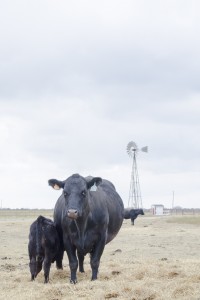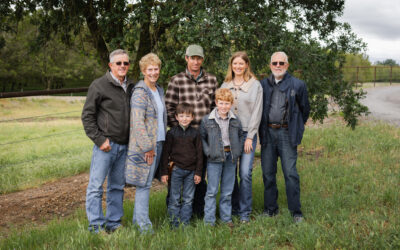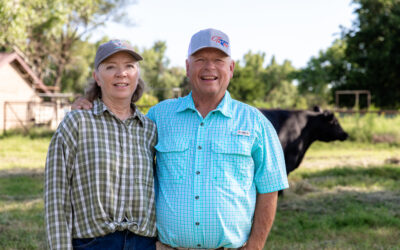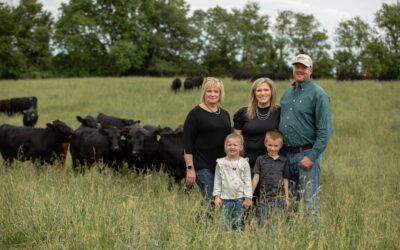
Restarting a legacy

As I visited with Tom and Seane Jones, the pride was evident. The photos from Seane’s father’s herd in the 1950s and National Western Stock Show champions were as expected. But the couple is not carrying on your typical ranching heritage.
Multigenerational ranching operations may be fewer today, but certainly nothing new. Most transition with equipment, cattle, land and buildings to maintain the family business. But in this case, continuing the legacy meant starting from scratch.
Seane’s grandfather Josiah Dillard established the ranch, and cattle were still the focus as her father, James Dillard, inherited the land and formed the J-D section of Dillard Ranch. Seane is one of six daughters, and the only one who still owns and runs cattle on a portion of what is now the J-D Claypool Ranch. After Seane’s father passed her mother and sisters continued the business, but over time the focus shifted. When Seane and Tom returned in 2007, there were no cattle.
They used their knowledge of horse racing pedigrees and genetics, applying it to how they evaluate cattle.

They use EPDs and genomics to evaluate the purebred cattle and GeneMax™ DNA test results on the commercial females to gather as much data as possible. Their quick adaptation to the technology and strict culling brought much progress in a few short years. The Joneses don’t keep any replacement females that score less than 90 of 99.
“Most are surprised when we tell them the cattle are new to the ranch,” she says. “Many work on the land and cattle for a long time to see the results we’ve seen. When you rely on the DNA and not only your eye, you can make progress toward a realized goal faster.”
Genomics provide increased accuracy in their quest for “the right genetics and right formula,” Seane says.
The Oklahomans may have started with a blank slate of genetics, but with their approach to balanced selection and use of modern technology, the future of the J-D Claypool Ranch looks strong. Cattle are again thriving on this land and poised to last another 100 years.
~Katy
Industry Information intern Katy Kemp is currently pursuing a master’s degree in ag communications from Oklahoma State University.
You may also like
Legacy in the Golden Land
On a quiet stretch of Northern California rangeland, a different story unfolds. The Borror family’s legacy modestly speaks through the cattle they raise, the ground they steward. The generations who’ve made a life here demonstrate commitment to doing things right, even when no one is watching.
Helping Hands, Helping Herds
“When I die, I want to come back as one of your cows,” murmurs a friend to Steve Zybach. Full to the brim from an alfalfa ration every day, bountiful fields of lovegrass stretched out across the Texas Panhandle—and owners who leave no ounce of cattle care up for question. The Zybachs’ motivation for this level of dedication to their Angus cattle is simply love.
An Ambassador for All
Joanie, with daughter Lindsey and her husband, Adam Hall, raise registered Angus cattle with two primary goals: producing high-quality seedstock that perform well in a wide variety of environments and ensuring end-user satisfaction. Those goals tie everything together, from promoting Angus to other producers to sharing their story with CAB partners and beef consumers.



